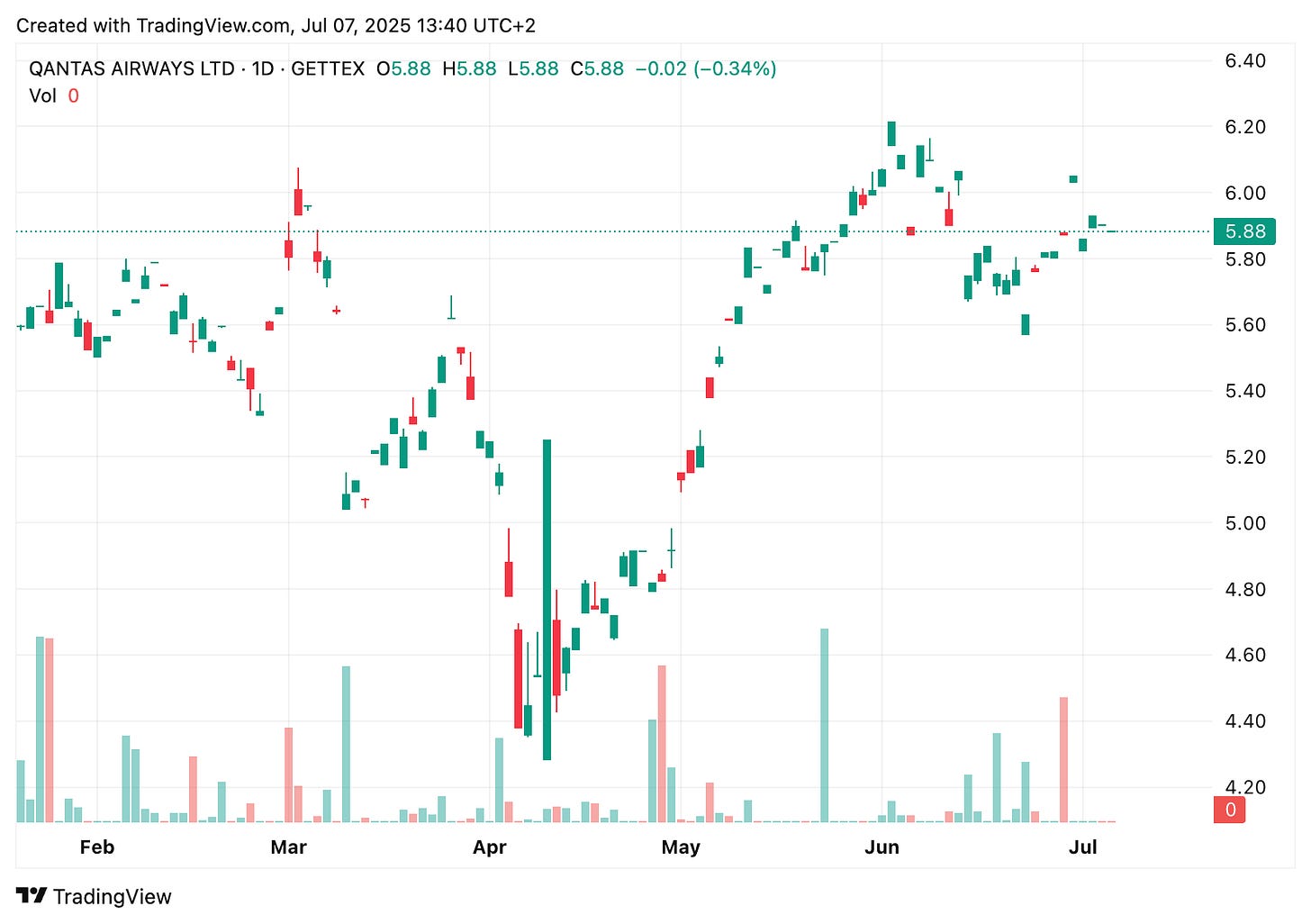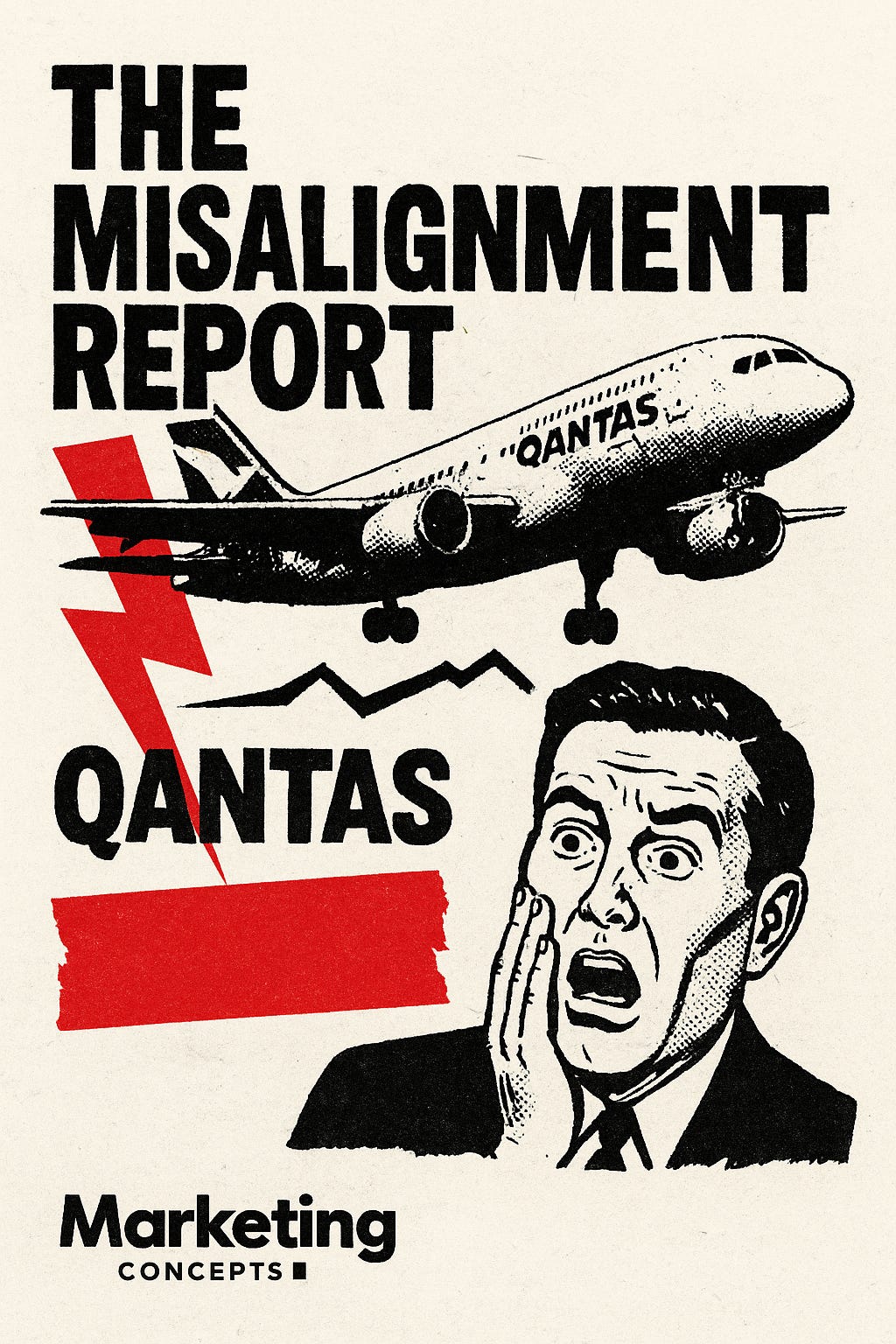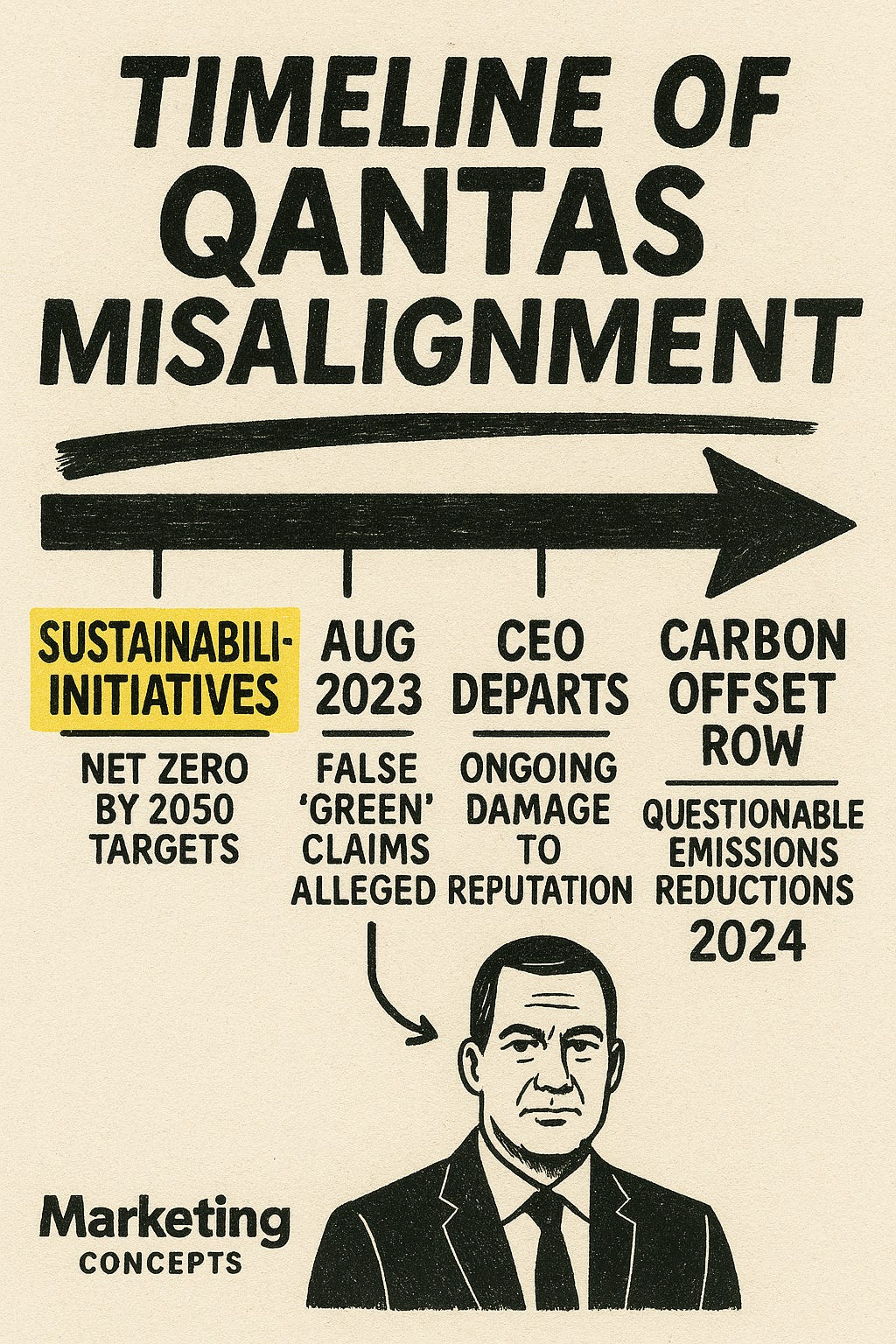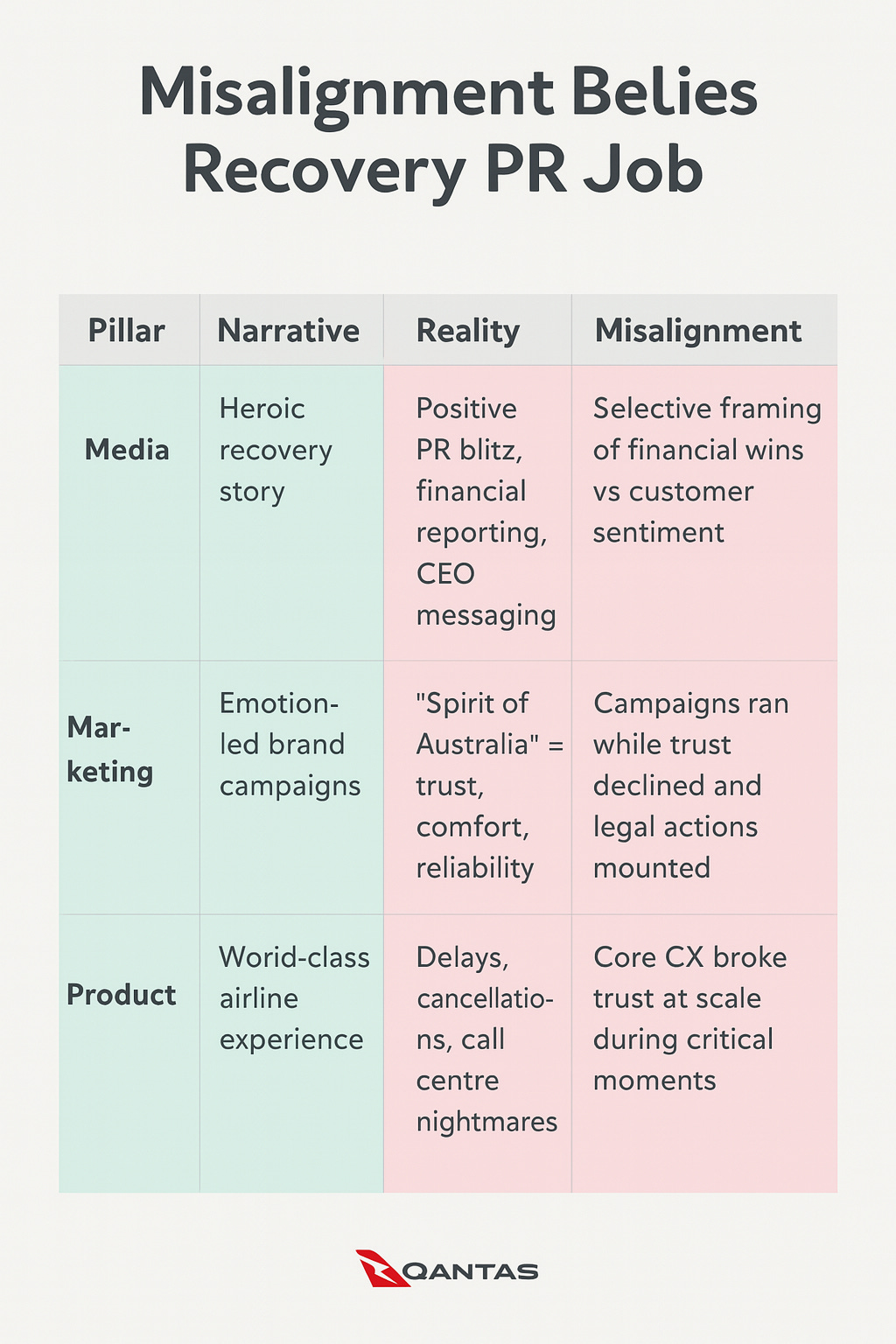The Misalignment Report: Qantas — Trust Lost in Transit
The Story They’re Telling
Qantas positions itself as the premium airline of Australia.
Their marketing leans on emotional nostalgia, national pride, and the legacy of being “the spirit of Australia.”
Recent campaigns emphasised:
🛫 Reliability and customer care
🌏 Sustainability commitments
💼 Loyalty innovation (e.g., new tiers, partnerships)
🧡 Emotional connection via iconic brand assets (choirs, family reunions, etc.)
In media, the narrative is clean: post-COVID recovery, record profits, investment in new aircraft, and a tech-forward future.

The Reality Behind the Product
What customers experienced was a delayed, expensive, and disjointed product:
Cancelled flights, lost bags, and a consistently low NPS during the recovery period
CEO Alan Joyce departed under pressure amid a political and reputational firestorm
Consumer trust cratered: ACCC sued Qantas for allegedly selling tickets on 8,000 flights that had already been cancelled
Points devaluation and limited reward seat availability frustrated core frequent flyers
Qantas workers and unions accused the airline of outsourcing and cost-cutting at the expense of service
In essence: the product didn’t just lag behind the media—it actively contradicted it.
Estimated Timeline of Misalignment
Where It Broke: The Misalignment
The brand message ran ahead of the customer experience.
Instead of slowing down the media machine to rebuild product, they doubled down.
Strategic Implications
Qantas didn’t just suffer a reputation dip — it created a strategic blind spot:
The marketing team became the mouthpiece for the financial narrative, not the customer experience.
Media and marketing were used to cover for product gaps, not fix them.
The result? Brand equity eroded faster than it could be rebuilt—even with billions in profit.
This is what happens when media optimises for narrative wins, marketing optimises for nostalgia, and product is deprioritised or politicised.
Takeaway for Marketers
📌 Narratives don’t scale if reality breaks under them.
Great marketing can drive momentum—but if product and operations can’t catch up, all it creates is a backlash.
If you work in a business going through growth, recovery, or repositioning:
✨ Slow your story down until the product can support it.
Better to underpromise and deliver than to advertise reliability while customers are still stuck in Manila trying to get home.







